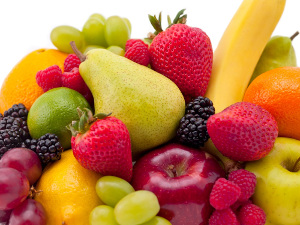3D printer company 'reinvents concept of fruit on demand'

Every new kitchen appliance was once the brainchild of innovative thinking. The late 1800s brought to life the toaster, the 1930s was the decade the juicer was first invented while microwaves hit the world stage in the 1980s. These may seem like humble contraptions these days when compared to the high-tech digital technology of 21st century living, but they all started somewhere.
Imagine a typical home kitchen a few years from now. What might it look like? One U.K. innovator, Dovetailed, has an idea in mind - a 3D printer that reconstructs edible fruit that is accessible for the home market. In an interview with www.freshfruitportal.com, one of the designers behind the system takes us through the reconstruction of fruit that, apparently, tastes just as good as the real thing. 
Dovetailed recently unveiled the system which can take fruit juice, add some calcium and by using a method called spherification – a culinary process of shaping a liquid into spheres which visually and texturally resemble caviar – can physically print an artificial raspberry.
"We have reinvented the concept of fresh fruit on demand. Our launch event was attended by a group of designers, foodies, chefs and technology professionals," company founder Vaiva Kalnikaitė says.
"People were really interested in the concept that instead of picking fruit, you can essentially reconstruct fruit from fruit juice. So the initially reaction has been great.
"Potentially you can reconstruct fruit in places or locations where it is really hard to grow certain fruit and it also makes transportation a lot easier, can preserve nutrition better and even enhance nutrition; these are all aspects that the printer can do now."
How the technology works
Kalnikaitė insists 3D fruit printing is a very simple process. The flavors come from fruit juice mixed with sodium alginate (a food stabilizer used in ice-cream, yoghurt, cream and cheese), dripped into a dish of cold calcium chloride. Each droplet of the mixture forms into a tiny sphere in the calcium and this solution causes the outer layer of each sphere to form its own flexible thin skin.
"A reaction happens where the calcium creates a tiny wall of gel around each droplet until you have a complete piece of fruit like a raspberry or blackberry. We hope to experiment with lots of other fruit as well."
The taste, shape, size and nutrient content of the reconstructed fruit can all be customized.
"The ingredients are already available in some gourmet outlets. The printer is connected to a computer and we have a program that allows us to draw what shape we want by hand. For example, you can draw a square and it will be aligned to this exact formation."
But how tasty can printed fruit really be?
"We are using all natural ingredients and it’s the nutrient content of whatever you are using to reconstruct the fruit. So you can pick up a carton of fruit juice from the supermarket or used freshly squeezed juice and use that to reconstruct; so the nutrient value stays the same depending on whatever is in the juice," Kalnikaitė says.
"You can also use additional nutrients so essentially every other drop could be something which adds to the nutrient content of the fruit. We are trying to keep it very natural and potentially fully organic and fresh.
"When you bit into the fruit you get the sensation of eating fresh fruit because the tiny droplets break and release juice so it gives the diner the same sensation."
Theoretically it is not just fruit juice that can be used to print or reconstruct fruit or anything else for that matter. The use of other liquids is something the Dovetailed team will be experimenting with over the next phase of its innovation.
"It’s possible to use soups, difference sauces and even alcohol. We’re trying to find chefs who can help us with further research and experimentation, especially on the taste side of things. We have the right consistency for raspberries and blackberries and they really do taste good and fresh."
Kalnikaitė knows there is much more work to do but the company has a short-term goal of marketing its 3D fruit printer to gourmet restaurants and foodies interested in innovative culinary techniques, literally adding a new dimension to the dining experience.
"The 3D printer is not yet ready for retail but we are talking with several U.K. companies interested in helping us take it to market. We’re hoping things will move on soon.
"We’d like to see chefs using our product in commercial kitchens and restaurants because it certainly adds an innovative feature to a venue. Diners can watch how their food is being made and people can have freshly printed raspberries; this really taps into the performance side of making food.
"In the longer term it would be really interesting to see this make it into people’s home. It’s a real possibility but it depends on how we design it as well for the next phase. But it could be a case that it becomes another kitchen appliance right next to the coffee machine."















































